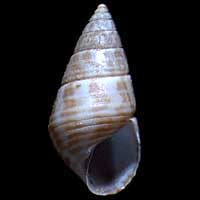|
< Previous family introduction |
|
|||||
 |
Family Dialidae Dialids
|
|||||
|
The Dialidae contains solely the genus Diala, in which there are only six species, all restricted to the Indo-West Pacific and southern Australia. They are small or minute molluscs that live on seagrass, algae or coral rubble in sheltered and estuarine situations, where they are common to abundant. The genus Diala has previously been placed in five different families in the superfamily Cerithioidea and also in the superfamily Rissooidea. Laseron (1950) revised the NSW species using only shell characters, and placed the genus in the Rissoidae. Ponder (1991) reported on the anatomy of Diala suturalis and confirmed the placement in a separate family. Ponder and de Keyzer (1992) revised all the species in the family. Of the six species in the family, three have an Indo-West Pacific distribution, two are restricted to southern Australia and one to Western Australia: Two species reach into NSW. Diala albugo Tropical Indo-West Pacific Diala semistriata Tropical Indo-West Pacific Diala sulcifera Tropical Indo-West Pacific Diala suturalis Southern Australia Diala megapicalis Southern Australia Diala lirulata Western Australia Of the two southern species, only D. megapicalis reaches into NSW, occurring as far north as Jervis Bay. Throughout most of its range in southern Australia this is sympatric with the other southern species, D. suturalis, which occurs as far north as Mallacoota, near the NSW-Victoria border. Of the three widespread tropical Indo-West Pacific species, only one, D. sulcifera, extends southwards into NSW, where it occurs as a subspecies separated from the tropical distribution by a distance of 1000 km. Family reference Ponder, W.F. & de Keyzer, R. 1992. A revision of the genus Diala (Gastropoda: Cerithioidea: Dialidae). Invertebrate Taxonomy 6:1019-1075 Coverage The two species of the family known from NSW are treated here. Identification Notes Shells of this family are small, less than 12 mm in length and usually only 3-7 mm, with a high spired, often brightly coloured shell. Shells have spiral but no axial sculpture. The aperture is entire i.e. there is no siphonal or anal canal; the outer lip is always thin without any formation of a varix. |